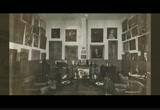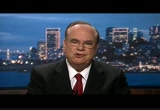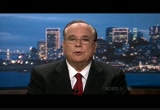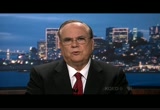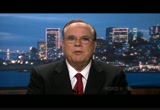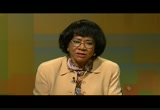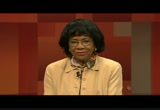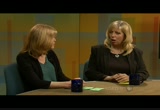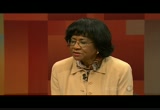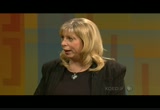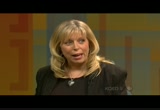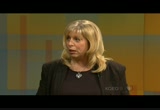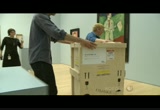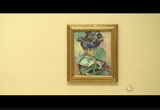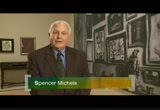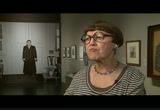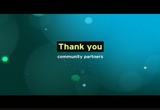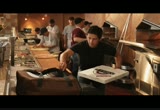tv This Week in Northern California PBS July 16, 2011 1:30am-2:00am PDT
1:30 am
captioning by vitac, underwritten by fireman's fund >> belva: tonight state treasurer bill lockyer on how he plans to keep california's solvent if the federal government defaults on its loans. more tough times ahead for higher education students. california state university tuition has now doubled from 2007 and university of california fees will go up almost 10%. the citizens redistricting commission draws fire with its new political district lines and won't release its latest maps to the public as planned. and a look at two exhibits in san francisco that celebrate the life of oakland writer
1:31 am
gertrude stein and her family's extraordinary art collection. coming up next. >> belva: good evening, i'm belva davis. welcome to "this week in northern california." as the country watches president obama and congress debate over raising the federal debt ceiling, state treasurer bill lockyer is planning ahead. i spoke with him earlier about how he intends to ensure there's enough cash for california. treasurer lockyer, welcome to
1:32 am
the program. we know the problems that we're facing in washington, but the question is, how will this effect california? what will be the impact if there's no agreement on raising the ceiling? >> the immediate impact, belva, is that if the federal government has its credit rating go down, then that ripples into the credit ratings of states and municipalities all over the country including california. there are lots of local entities that have their credit tied directly, just automatically, whatever the federal treasury credit rating is, they get the same thing. now, our state is only seco secondarily that. santa fe, oakland, los angeles, the list goes on of like 7,000
1:33 am
different agencies that would be impacted. so for them to borrow money, if they even can, if it opportunity freeze up, to borrow money, to build a school or finish the highway or whatever, could become significantly more expensive. so that's one. the second problem is, if they can't get it done in washington and there's a failure to continue to make dispersements, school money, medicare, health money and so on, then that creates a cash flow problem for the state of california as well as others and it means when i have to go out and borrow about $5 billion this summer to continue to pay the bills until a better revenue month comes later in the year, i can't borrow at a reasonable rate. it makes it more urgent. it might even mean we'd send out
1:34 am
ious if we're not able to get to the dislocations that are national like that. that's the second problem. now, the third is, if they do make a deal and do make a deal and it includes, you know, trillions of dollars of budget cuts, then that might result in cash flow problems as well as individual hardships. we just had our budget adopted in california that mostly relied on spending cuts in health programs and work fair programs and other things. and schools, et cetera. those miseries could be amplified if now there's a round of federal cuts that pile misery on top of misery. >> so we hear also that it could affect social security payments and would that have any direct impact on california if that ended up being one of the outcomes? >> well, i don't think that's
1:35 am
likely to happen because social security is one of the first payouts that they make and there's some money, even know there's not enough to pay all the bills. if it continued for a long time, then eventually that gets to be probl problematic as well. that doesn't matter directly to california other than all the individuals that would maybe be impacted, would perhaps without income have to not pay for other consumer items and so on that affects our revenues, our economy. there's indirect impacts as well as individual ones. >> what can you, as treasurer, do, for california? >> well, do a lot of praying, i guess, but, you know, i talk to the congressional delegation. they know what the problems are and how we're trying to do our best to get the right outcome in washington, d.c. after that, it's just, you know,
1:36 am
i'm the banker, so i'm the one that tries to make sure there's enough money to keep the schools and other programs going. >> belva: what can you do actively to avoid, you know, the pinch being quite as hard as it could be? >> sure. one thing i am doing right now, you know, this federal problem has an august 2nd date, and we would normally later in august borrow $5 billion that i had mentioned, pay the bill through schools and others in the next few months. we're tried to a bridge loan that we would get completed before august 2nd. so if they do have some problem, we'll already have our money in the bank and can pay the bills and can last for a while until we're impacted. >> belva: we have just a few seconds left, but can you speak at all about the california
1:37 am
state budget? i mean, how are we on that? do you expect some other problems coming from our own shortage, still not quite balancing the budget? >> belva, our policymakers decided that they would count on an additional $4 billion in revenues out of about $88 billion. more than was forecast hoping the economy would pick up and then they wouldn't have to make additional cuts in the safety net or schools or other things. so if that works out, we're in good shape. if it doesn't, another round of cuts. >> belva: another round of cuts. all right. treasurer lockyer, thank you for bringing -- i'm not sure -- >> all of this great -- >> all of this great news to us. thank you. there was good news. if treasurer lockyer does borrow, there's good news from wall street. the rate for california would be the lowest it's been in years.
1:38 am
joining me now to discuss redistricting and higher education tuition going up are lisa vorderbrueggen, political editor with "the contra costa" times and nanette asimov, education writer with "the san francisco chronicle." nanette, we'll start with you. what we seem to have is the worst possible outcome. what happened this week? >> well yet again both the california state university and university of california have raised tuition and not by a little amount, by quite a lot. it was $ 9.6% for university of california, on top of another one, an 8% already approved for this year. now students are going to be paying more than $13,000 for a year at uc, a university that was really supposed to be free. california state university will be paying about $6,500. this is all before room and board. and they did it in the middle of
1:39 am
the summer so we did not see the kind of protests that we've come to know the past couple years with students occupying buildings. it was relatively quiet. >> belva: listening to the treasurer there, it seems as though this could get much worse. >> you're absolutely right. one of the things that the regions and the sfu trustees warned us is mid-year cuts. if the state does not get revenues they anticipate, both of the universities say that they will raise tuition again and perhaps, you know, just an automatic trigger of maybe 5.5% more. i mean, i think that the students really need to start expecting what they've seen as annual raises and they're really angry about it and they just -- what they tell me is that their family income isn't going up and tuition is. so they're very angry. >> isn't it a function of sort of shared sacrifice? i mean, there's been cuts everywhere in so many things.
1:40 am
why shouldn't college students be expected to -- i know they're not bearing the full cost of the shortfall. >> it's a great question. it's easy in a sense to put it on to students because they're able to pay in a sense, their source of funding. what is being argued is the california state university systems are jewels, really crown jewels of this state. you see other areas going down, what was named yesterday was the foster system, the prison system. everything is feeling the crunch of this horrible economic time. but the university systems are still economic engines. they produce research and development and products and they're really a jewel of california. and you see the trustees saying we're going to ruin it all, you know? >> belva: what about cutting in other areas other than increasing fees for students? >> well, it's true the tuition only takes care about a quarter of the deficits that these
1:41 am
universities see. so both universities talk about all the cuts that are going on in their campuses. we see layoffs. we see course sections cut back. the chancellors at the region's meeting this week were talking about how the morale is down and there are long lines for courses. so it's coming on both ends. the students feel it and they're really mad. >> now lieutenant governor gavin newsom was the only no vote on the tuition. was he making this empty political statement? i heard one of his critics call him irresponsible for the vote. >> he and the student trustees also voted, but somebody said yesterday -- >> i think there were a couple of others. george marcus. >> george marcus, that's right. and one other person. but they -- the lieutenant governors always vote now because they can.
1:42 am
>> belva: the other big controversy was over the salary of presidents in the system and the big raise that one got in san diego. >> exactly. >> belva: how did that all come about at the same time? >> it was amazing. because even as the trustees are raising, and the regions are racing the fees, a uc san diego campus president got a huge race and the uc system, mark larrett, got about a $1 million raise. that's not from state fund. others did get very hefty funds paid for by the state. why they do this, they say, well, these people have worked harder and they've taken on new responsibilities. and when you say that, well, the lower paid workers say, well, haven't we? >> in the market, these individuals in theory could go somewhere else and the system would lose them, right? isn't that the argument? >> harvard university head hunter came knocking on the door
1:43 am
of mark larret, ceo of medical center at ucsf. that was the justification, the head hunter knocked on your door. they can't have him leave because he's in the middle of major projects. >> belva: can anybody make them rescind these increases? the governor i understand -- >> trying, and an assemblyman has sent a letter to uc president asking for rescinding. i think you will not see that happening. >> belva: okay. one controversy, we move from that to yet another. and that's about where you draw the lines for the districts that our representatives will have to work hard to get elected to. lisa, tell us about that. >> well, you know, as you may or may not know, once a decade after the census we redraw political maps in order to get one person one vote. so our senate and legislative and congressional seats are all up for redrawing. this time around our voters decided to have a grand experiment in california and have an independent citizens
1:44 am
redistricting commission draw those lines instead of a partisan-controlled legislature. and, boy, has it been interesting because now we're seeing laid out in public all of these hours and hours and hours of meetings and maps exactly how the sausage is made. and i think that people, you know, it comes a little bit out of the guise of be careful what you ask for. now you're seeing real live what those conflicts are. so many people are so mad that it may end up being the ultimate perfect compromise and that no one is happy with the outcome. >> belva: but now the commission, i guess, whether i clearly understood or not, has broken a promise of revealing these maps. >> well, that is a matter of interpretation that i don't agree with, myself, because what the commission did was they initially set up a schedule in which they would release two rounds of draft maps before they released their final maps. they canceled the second draft
1:45 am
maps in lieu of doing an ongoing sort of rolling out of the internet maps so that they could keep working on the final maps because they're running out of time. all of these meetings are on the internet. you could watch hours and hours of blow by blow and all of the maps are online for you to see. the only thing they didn't do was sort of put out a package of all of the sort of interim set of maps that would go out then they would get response to those. they're continuing to take public comment. they're continuing to roll the maps out. go to wedrawthelines.org at this moment and pull up more maps than you could possibly want. >> how different are they from what we have? are we going to see a wholly different political landscape? >> we're going to see a whole scale change in the landscape in california. the previous lines were drawn to protect the incumbents. they cut a deal so all the incumbents would get re-elected. almost all of them did with the exception of one in the last decade. now you have districts that are being drawn based on city
1:46 am
boundaries, communities of interests, geographic constraints, long arms of things crossing over to pick up a little population of democrats. >> gerrymandering. >> gerrymandering. people remember what that is. that's going away. now what we're having is this pitch battle between the various communities of interest and ethnic groups, racial groups that want to protect their voting clout. when they want to be able to elect their representatives to congress, be you latino, african-american, the gay and lesbian community has their maps out. everybody has maps. >> what it all comes down to is, is it going to remain a democratic state? is it going to be more republican? who wins, who loses here? >> we're absolutely going to remain a democratic state based on registration. most of the analysis of the first draft of maps -- they've been rolling along with changes. the democrats are expected to potentially gain some seats.
1:47 am
there's a lot of talks the democrats will get the two-thirds they need in the legislature to avoid having any kind of block by the republicans for a budget. and the democrats very much want that. it will probably be a function of this is where people live and how the lines come out. the commission in theory is not drawing those lines specifically to make that happen. >> belva: let's talk about fremont, the indian population there had strong objections. also, what are these voting right act cities, counties or areas they're concerned about? >> the federal voting rights act trumps everything else that goes on in mapping. what it says if you are a minority population that cannot draw lines to dilute your voting power. you cannot take a whole community of african-americans and split them into 15 pieces to keep any african-american from getting elected. we have a half dozen counties fewer than that in the state of california that are official voting rights acts counties. in other words, they've had
1:48 am
violations in the past. the feds require preapproval of the area before the maps can go forward. those areas are one thing. even in l.a. county, we've seen this huge push between the latino community and african-american community. african-american community members have declined. they have three congressional representatives now. the latino communities say they should get more and so you have the citizens commission, these amateurs -- they're not exactly volunteers. they're getting paid. who have never done this before trying to balance out all of these competing interests. >> belva: in the end when will we see the maps? >> august 1st will be the final maps. there will be a 14 day review period. they have until august 15th to adopt them. then we'll see whether we go to court or back to the ballot or have a referendum. it's all going to be wild. >> belva: away from the problems for a moment. we're going to turn to art. two san francisco museums are currently show kay casing the life of oakland writer gertrude
1:49 am
stein and the art collected by her family while living in paris in the early 1900s. pbs correspondent spencer michels has the story. >> reporter: in turn of the century paris the american writer gertrude stein held court for avant garde painters and writers at the home she shared with her brothers and sister-in-law. she had been raised in oakland then went to baltimore, but paris was where the art scene was. century-old photographs of their apartments show the walls nearly hidden by paintings of picasso and others the families had bought cheaply. a collection that was dispersed over the years. today that amazing assemblage of groundbreaking art has been reassembled at the san francisco museum of modern art. >> the exhibition brings together over 150 pieces that were once owned by the steins, from five different continents, from public collections, from
1:50 am
private collections, really from all over the world. >> reporter: janet bishop, one of the show's curators, said this wasn't any art collection. stein scoured art galleries and shows buying paintings by unheralded artists like pierre bunare, wan gri as well as picas picasso. cutting edge artists of the day whose work not yet famous nor expensive gave rise to cubism and surrealism. >> the signs were really essential to the development of modern art in the early 20th century. their homes became the cross roads for dialogue and anyone who was interested in seeing the most interesting new art being made in paris at the time really had to go to the stein residences. >> reporter: for years bishop and others tracked down the collection and convinced current owners to part with their
1:51 am
treasures for exhibition here then in paris and finally next february in new york. a very expensive journey. in san francisco, the paintings were examined minutely on arrival for pre-existing faults or flaws. in the museum's conservation room, some of the work received a little touching up, a little cleaning. the removal of old varnish, perhaps some reframing. everybody being very careful. the steins were not wealthy art patrons. they had a modest inheritance from a father who had operated cable cars in san francisco. and they spent most of it on paintings and sculpture destined to become extremely valuable. >> gertrude stein famously said you can buy art or you can buy clothes, but you couldn't do both. so the steins decided to focus on artists who were their peers, artists who had not yet made their reputations. >> reporter: ari matrice was a family favorite.
1:52 am
in 1906 gertrude stein and her brother saw this at a paris salon, unsold. >> they stepped forward at the end of the exhibition and offered matice a discounted price. he accepted it. as soon as that painting got to their home on the route, people needed to go see it. it had been the most notorious submission to that year's salon. >> reporter: notorious because even matice's wife who was the model was embarrassed by the colors that didn't correspond to nature. >> it was one thing to do that with landscape but then to take that palette and apply it to a portrait of a woman, to paint a woman's face green was utterly shocking and unprecedented. >> reporter: the painting, woman with a hat, is today regarded as a masterpiece and graces the cover of the catalog. the stein sculptures and pictures at san francisco would
1:53 am
be worthy of a show even if it weren't for the steins. the steins, of course, give a lot of added interest. across the street at the contemporary jewish museum, they've mounted a companion show on the life of gertrude stein. >> these are two drawings by david levine. >> reporter: as a character, stein was a fascinating study and wanda corn, art professor emeritus at stanford has delved into her life and her friends. >> many of her friendships that need be said were rather short lived because she would quickly move on to another interest, another artist, another project that she was taking on. >> reporter: one friend she did keep was her companion, alice b. toklus. >> gertrude and alice fell in love. eventually alice moved into the apartment of leo and gertrude. it was gertrude who continued to
1:54 am
bring artists into the home. >> reporter: but gertrude stein wanted to be more than a collector. >> she liked collecting but after a while, her public image as a patron and a collector bothered her. she wanted to be known the same way picasso was known, for her creative work, not just the collecting of others. >> reporter: stein thought of herself as a writer, whose work, corn contends, has come back into fashion. >> she was outside the mainstream until really feminism rediscovered her and began to look at her through a completely different lens. >> reporter: in addition to writing several books including the bestselling autobiography, stein composed the la brett toe for a cutting edge opera converged by virgil thompson. three acts with an all black cast produced in 1934. both museums are showing
1:55 am
excerpts. as a writer and a collector, gertrude was a very strong personality who encouraged her own celebrity and loved being painted and sculpted. perhaps the most famous portrait is by picasso, which both museums are featuring in different forms. >> gertrude tells this wonderful story of having sat in picasso's studio for some 80 or 90 sittings in a broken armchair then at one point he got completely fed up. he went off to the piranese for the summer. when we got back to the studio in paris he repainted the head and made her completely mask-like. that really was a fundamental step toward cubism. >> reporter: wanting to ensure her own legacy, stein left the picasso portrait to the new york metropolitan museum of art. the only painting she willed to a museum. >> belva: both exhibits run
1:56 am
206 Views
IN COLLECTIONS
KQED (PBS) Television Archive
Television Archive  Television Archive News Search Service
Television Archive News Search Service 
Uploaded by TV Archive on

 Live Music Archive
Live Music Archive Librivox Free Audio
Librivox Free Audio Metropolitan Museum
Metropolitan Museum Cleveland Museum of Art
Cleveland Museum of Art Internet Arcade
Internet Arcade Console Living Room
Console Living Room Books to Borrow
Books to Borrow Open Library
Open Library TV News
TV News Understanding 9/11
Understanding 9/11
